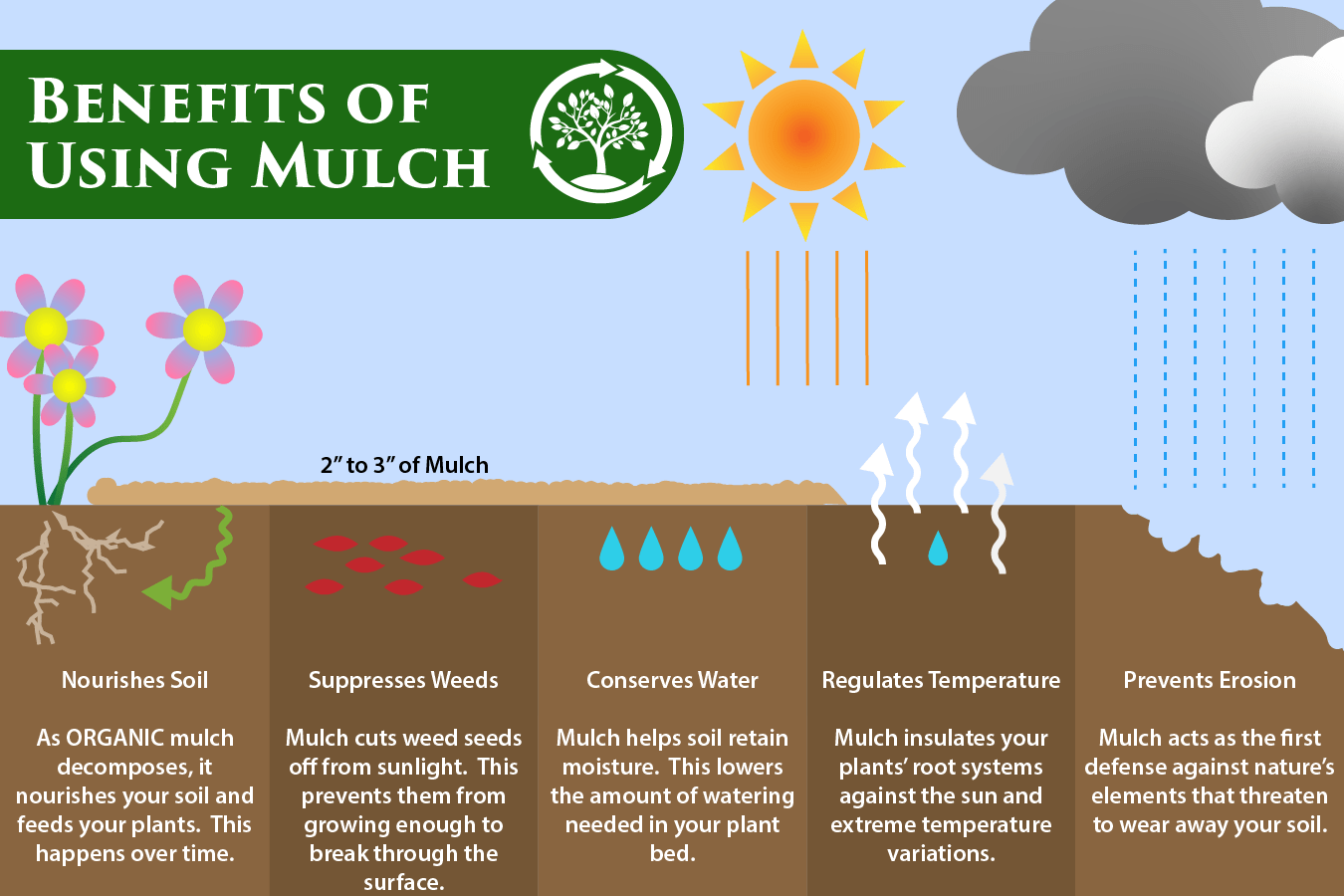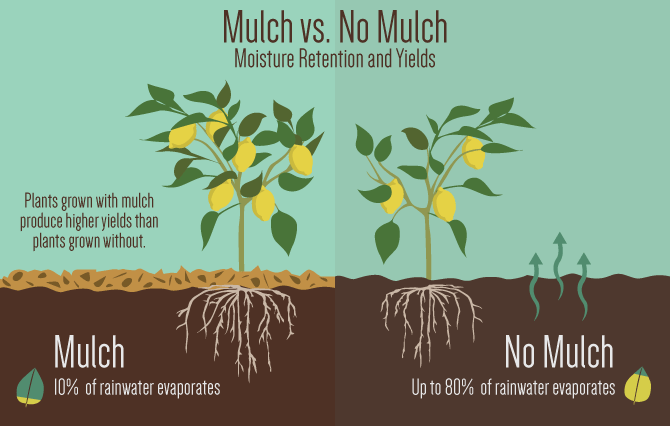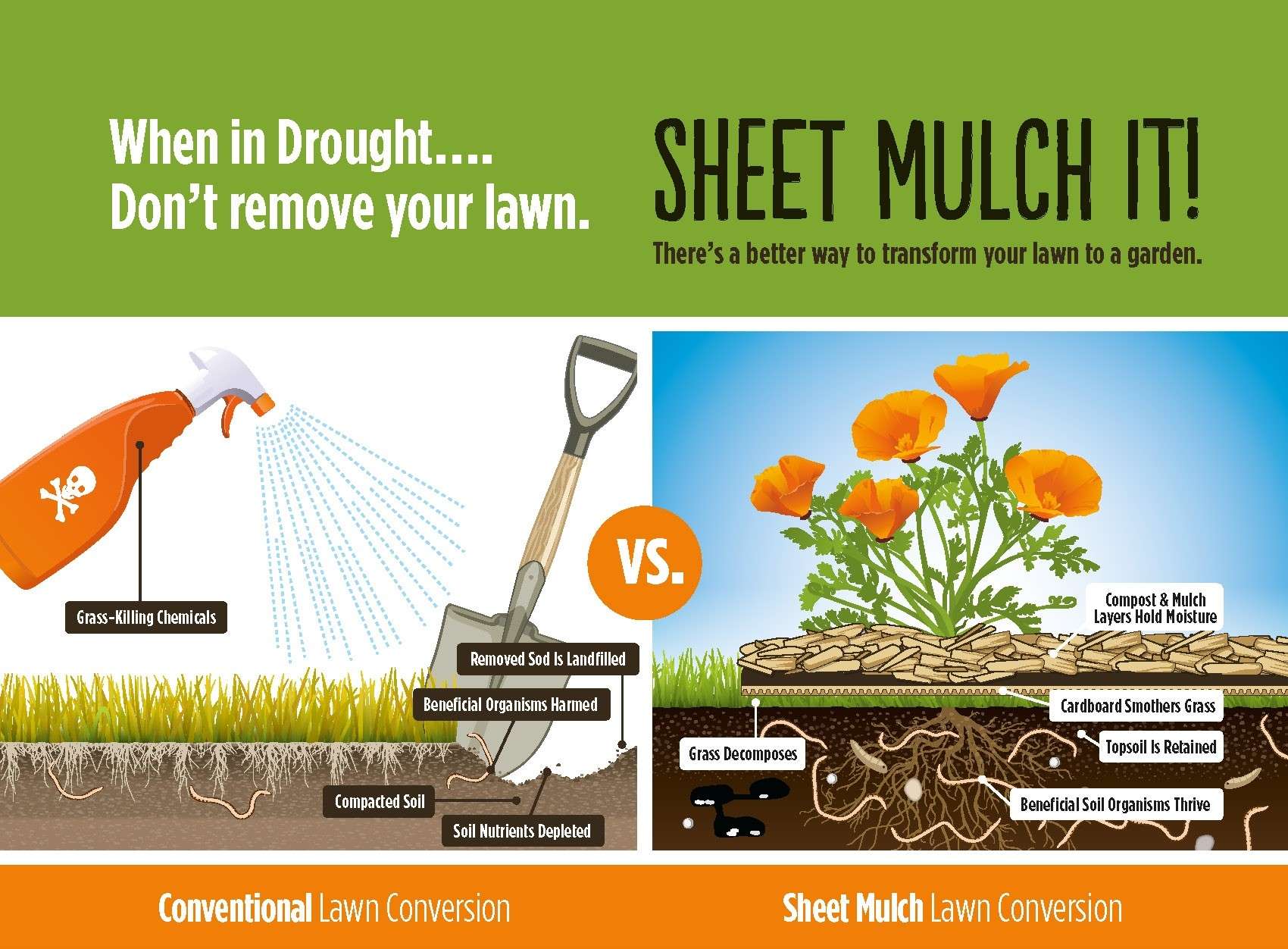Mulching is a practice that brings a plethora of benefits to both plants and topsoil. By using the right type of mulch and applying it properly, you can achieve numerous advantages. One of the most significant benefits is the reduction of water evaporation from the soil, which means less frequent watering is needed. Additionally, mulch improves soil structure, allowing water and air to move more efficiently. It also aids in breaking up compacted soil, improving drainage and root penetration. Furthermore, mulch enriches sandy soil by providing much-needed nutrients, enhancing fertility and water-holding capacity. While organic mulches release nutrients into the soil as they decay, inorganic mulches suppress weeds without fertilizing. Certain types of mulches, such as pine needles, can temporarily raise the soil’s acidity. Mulching also protects the soil from erosion, fills bare spots in the garden, and shades the soil, allowing beneficial bacteria and microorganisms to thrive. It even allows plants to grow directly in the mulch without the need for tilling the soil. As the mulch decomposes, it releases nutrients over time, feeding the soil. Moreover, it suppresses weeds, protects against soil compaction, attracts beneficial organisms like worms, aids in soil aeration, protects plants from frost, regulates soil temperature, and prevents water from splashing on leaves, ultimately increasing soil fertility over time.
Benefits of Mulching for Plants
Minimizes water evaporation
One of the primary benefits of mulching for plants is its ability to minimize water evaporation from the soil. When you apply a layer of mulch over the soil surface, it acts as a barrier, preventing direct sunlight from evaporating the water present in the soil. This can significantly reduce the need for frequent watering, as the mulch helps to retain moisture in the soil for longer periods.
Improves soil structure and water movement
Mulching plays a crucial role in improving soil structure and enhancing water movement within the soil. When you add mulch to the soil surface, it helps to loosen compacted soil and promote better drainage. This is particularly beneficial for areas with heavy clay soil, as it allows water to penetrate more easily and prevents waterlogging. Additionally, the mulch creates channels for water to flow through, facilitating better distribution of water throughout the soil.
Breaks up compacted soil
Another advantage of mulching for plants is its ability to break up compacted soil. Over time, soil can become compacted due to factors such as foot traffic or heavy machinery. Compacted soil restricts root penetration and inhibits the movement of water and air within the soil. By applying mulch and allowing it to decompose over time, the organic matter in the mulch helps to break up the compacted soil, improving its structure and promoting healthier root growth.
Enriches sandy soil with nutrients
If you have sandy soil in your garden, mulching can be especially beneficial. Sandy soil tends to drain water quickly and lacks essential nutrients. However, by adding organic mulch to the soil, you can enrich it with nutrients and improve its fertility. As the mulch decomposes, it releases nutrients into the soil, providing a source of nourishment for your plants. This enhances the water-holding capacity of sandy soil and promotes healthier plant growth.
Organic mulch releases nutrients
One of the advantages of using organic mulch is that it releases nutrients into the soil as it breaks down. Organic mulches, such as wood chips, straw, or compost, contain various nutrients that are essential for plant growth. As these mulches decompose, the nutrients are slowly released into the soil, providing a continuous supply of nourishment for your plants. This natural fertilization process eliminates the need for synthetic fertilizers and promotes healthier and more sustainable gardening practices.
Inorganic mulch suppresses weeds
While organic mulches offer the benefit of releasing nutrients, inorganic mulches can be effective in suppressing weeds. Mulches like plastic or landscape fabric create a physical barrier that prevents weed seeds from germinating and reaching the soil surface. This helps to reduce weed competition with your plants and reduces the need for manual weeding. However, it is important to note that inorganic mulches do not contribute to soil fertility and may require additional fertilization for optimal plant growth.
Raises soil acidity temporarily
Certain types of mulch, such as pine needles or oak leaves, can raise soil acidity temporarily. This can be beneficial for plants that prefer acidic soil conditions, such as azaleas or blueberries. By adding these acidic mulches, you can create a more suitable environment for these acid-loving plants. However, it’s essential to monitor the pH levels of your soil regularly to ensure that it remains balanced for the overall health of your garden.
Protects soil from erosion
Mulch acts as a protective layer, shielding the soil surface from the impact of raindrops and preventing erosion. When water falls directly on exposed soil, it can dislodge soil particles and carry them away, leading to erosion. By applying a layer of mulch, you create a barrier that absorbs the impact of raindrops, reducing soil erosion and preserving the integrity of your garden beds.
Shades the soil for beneficial organisms
Mulching provides shade to the soil surface, creating a cooler and more favorable environment for beneficial organisms. Bacteria, fungi, earthworms, and other microorganisms thrive in moist and shaded conditions. By shading the soil with mulch, you encourage the growth of these beneficial organisms, which contribute to the overall health and fertility of the soil. They break down organic matter, release nutrients, and improve soil structure, creating an optimal growing environment for your plants.
Plants can grow directly in mulch
One unique advantage of mulching is that certain plants can grow directly in the mulch layer without the need for tilling the soil. This is particularly beneficial for gardeners practicing no-till gardening or for areas with challenging soil conditions. By planting directly in the mulch, you can create a healthy and productive garden bed while minimizing soil disturbance. The mulch provides a protective layer and helps to conserve moisture, creating an ideal growing environment for plants.

Benefits of Mulching for Topsoil
Feeds the soil as it decomposes
Mulching not only benefits plants but also contributes to the overall health and fertility of the topsoil. As organic mulch decomposes, it breaks down into fine particles and adds organic matter to the soil. This organic matter nourishes the soil, enriching it with essential nutrients and improving its overall fertility. Over time, the decomposition of mulch contributes to the long-term health and productivity of your garden.
Suppresses weeds and protects against compaction
One of the primary benefits of mulching for topsoil is its ability to suppress weeds and protect against soil compaction. By applying a layer of mulch, you create a barrier that prevents weed seeds from germinating and growing. This reduces the need for manual weeding and saves you time and effort in maintaining your garden. Additionally, the mulch helps to protect the soil from compaction by reducing foot traffic and the impact of heavy machinery.
Attracts beneficial organisms
Mulching can attract a wide range of beneficial organisms to your topsoil. Earthworms, for example, are attracted to the organic matter in the mulch and aid in soil aeration and the breakdown of organic material. Other beneficial organisms, such as beneficial bacteria and fungi, contribute to the decomposition process, nutrient cycling, and the overall health of the topsoil. By creating a favorable environment with mulch, you can encourage the presence and activity of these beneficial organisms, promoting a thriving ecosystem in your garden.
Protects plants from frost
Mulching provides insulation to plants, protecting them from extreme temperature fluctuations, including frost. During the colder months, a layer of mulch acts as a blanket, protecting the soil and the plant’s root system from freezing temperatures. This helps to prevent frost damage and maintain the health and vitality of your plants, especially sensitive or tender varieties.
Regulates soil temperature
In addition to protecting against frost, mulching also plays a role in regulating soil temperature throughout the year. During hot summer months, the mulch layer acts as a barrier, preventing the soil from overheating and drying out. In contrast, during colder periods, the mulch helps to retain heat in the soil, maintaining a more stable temperature for optimal plant growth. By stabilizing the soil temperature, mulching provides a favorable environment for plant roots and promotes healthier and more resilient plants.
Prevents water from splashing on leaves
When you water your plants, splashing water can inadvertently reach the leaves, leading to the spread of diseases and fungal infections. Mulching helps to prevent water from splashing directly onto the leaves by absorbing the impact of water droplets. This protects your plants from moisture-related diseases and allows them to photosynthesize and grow without the risk of fungal infections.
Increases soil fertility over time
Mulching contributes to the long-term fertility of the soil by enriching it with organic matter and nutrients. As the mulch decomposes, it releases valuable nutrients into the topsoil, providing a continuous supply of nourishment for your plants. This gradual release of nutrients promotes balanced and sustained plant growth, reducing the need for additional fertilizers. Additionally, the organic matter in the mulch improves soil structure, water-holding capacity, and nutrient retention, enhancing the overall fertility of the soil over time.
In conclusion, mulching offers numerous benefits for plants and topsoil alike. From minimizing water evaporation and promoting better soil structure to suppressing weeds and attracting beneficial organisms, mulching plays a vital role in creating a healthy and productive garden. By understanding the specific advantages associated with different types of mulch and their proper application, you can harness the power of mulching to enhance the growth and vitality of your plants and nourish your topsoil for years to come.





